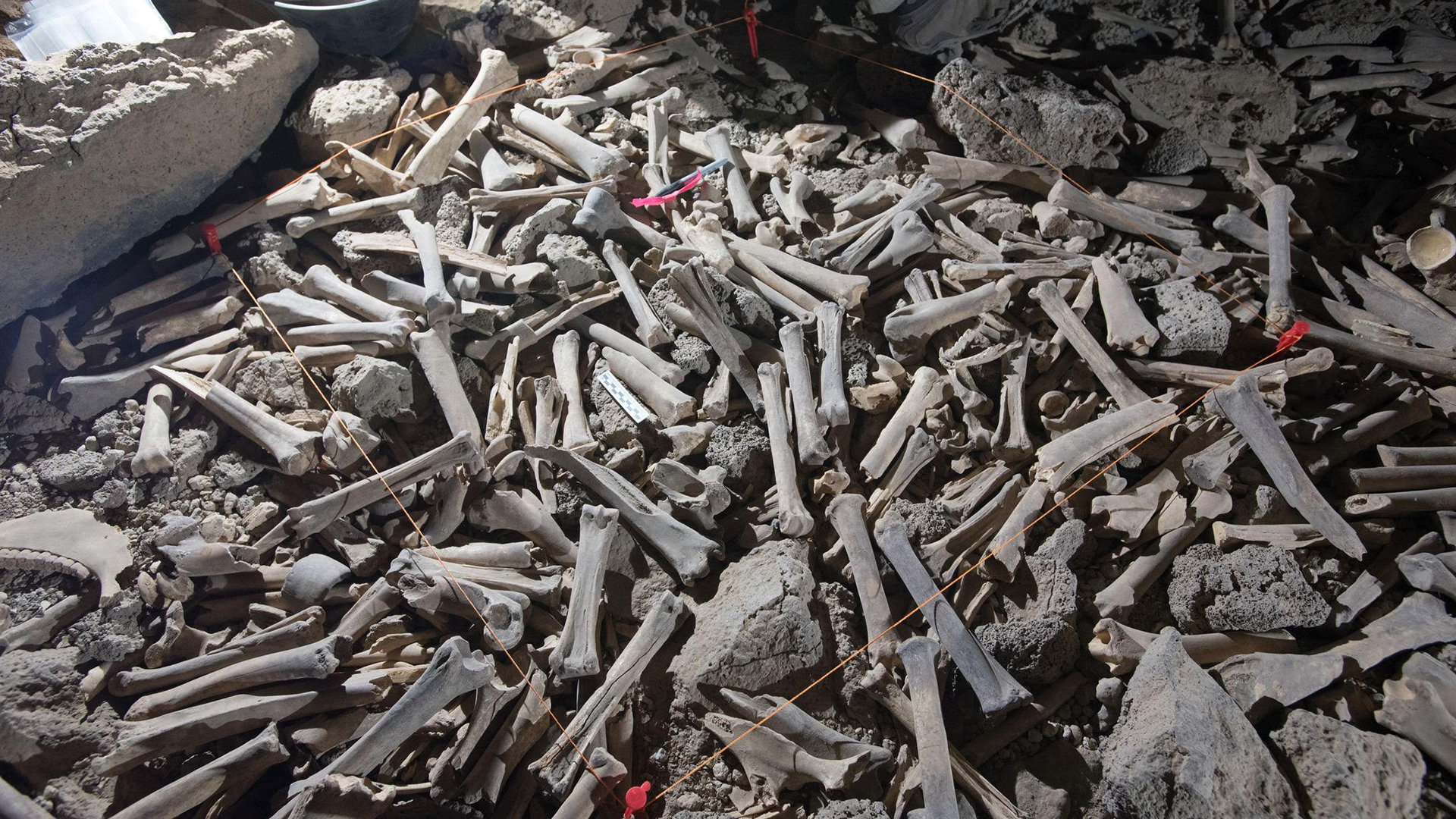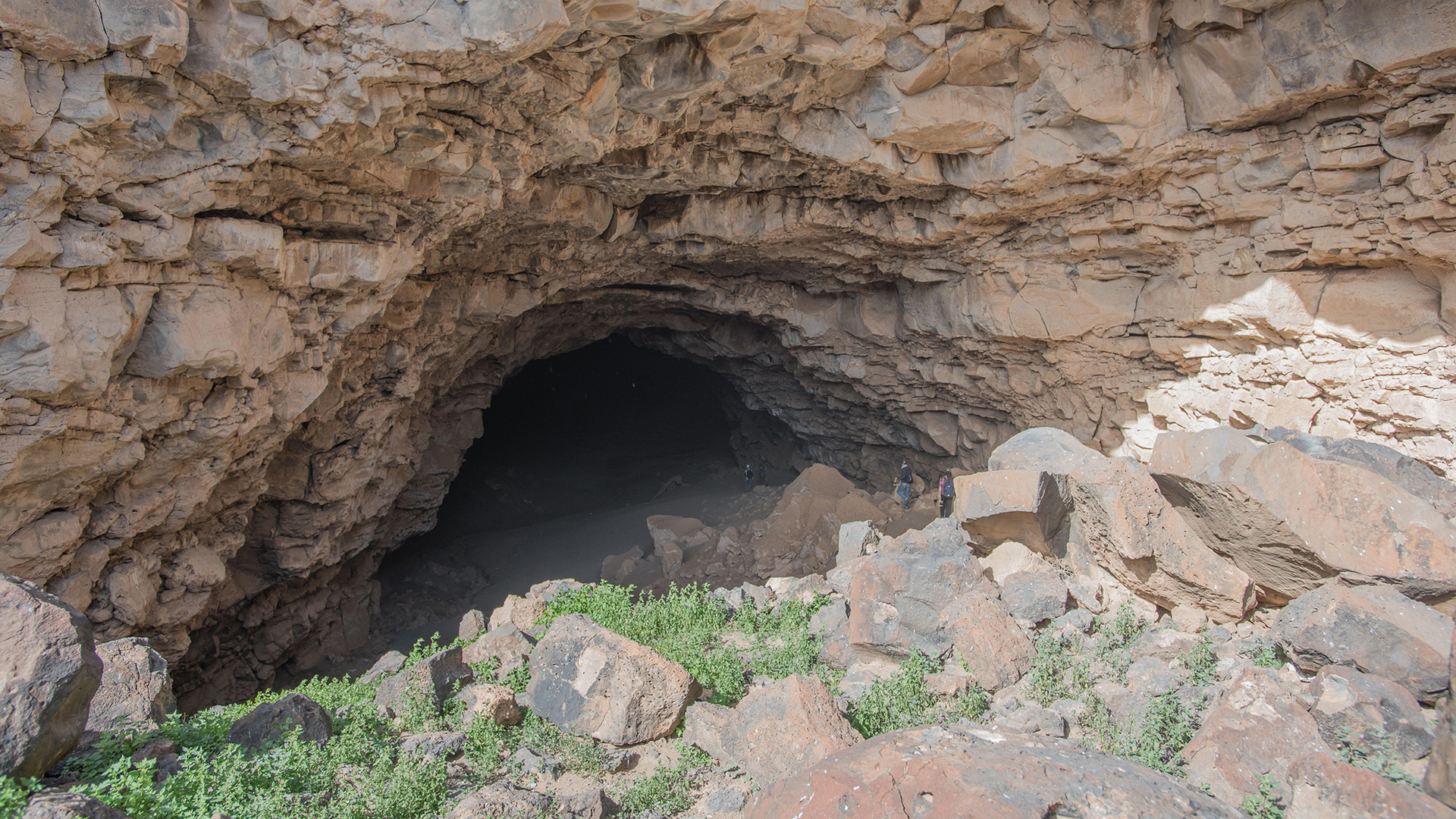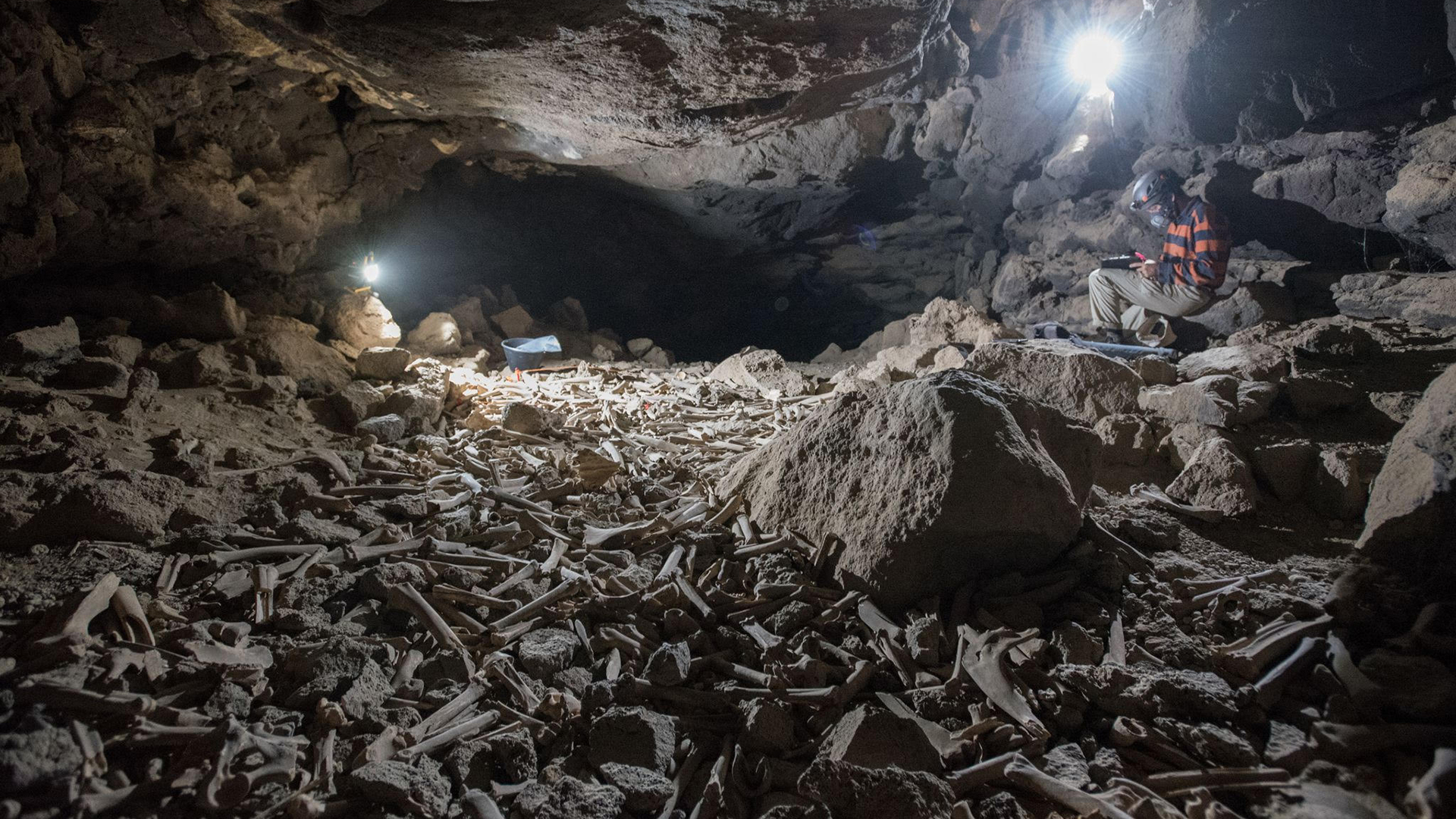Human skull fragments found in massive boneyard in hyenas' lava tube cave
The Umm Jirsan lava tube is the longest such structure in Saudi Arabia.

A winding lava-tube cavern in northern Saudi Arabia was home to hyenas for millennia, and they left behind plenty of gruesome evidence of past meals. The floor of the cave system was covered in deep piles of gnawed bones — some of which belonged to people.
Hyenas often scavenge their meals, so they probably didn't kill their human prey, but rather, dug up cadavers from nearby burials and devoured them in this underground den, scientists recently reported.
Other researchers described the western part of the lava tube site in 2009 as the "Wolf Den," because they suspected that wolves were responsible for the vast collection of bones. However, new analysis of the bone piles, coprolites (preserved feces) and individual bones told a different story. Scientists now suspect that the den belonged to striped hyenas (Hyaena hyaena), which fed on a variety of animals — including humans — in that location from at least 4,500 years ago until as recently as 150 years ago.
Related: 5 reasons hyenas like Harley Quinn's 'Bruce' are amazing
Lava tubes are underground passageways carved by rivers of lava that can reach temperatures exceeding 2,000 degrees Fahrenheit (1,090 degrees Celsius), according to the National Park Service Hawai'i. When lava flows are trapped in pools by rock walls, they can heat up and begin eating through the crust below, creating subterranean channels and networks. Once the flows subside or get diverted, tunnels that are left behind can extend as long as 40 miles (65 kilometers) and measure several dozen feet wide, NPS Hawai'i says.
For the new study, the researchers investigated part of Saudi Arabia's Umm Jirsan lava tube — the longest such network in the country. Located in the Harrat Khaybar lava field, this tube is made up of three passages separated by two collapsed walls of rock, scientists reported July 20 in the journal Archaeological and Anthropological Sciences. Umm Jirsan measures about 4,900 feet (1,500 m) long, with a passage height of about 26 to 29 feet (8 to 12 m).
The scientists focused on the lava tube's western passage, which contained "an extremely dense accumulation of bones," the authors wrote. They examined more than 1,900 bones, identifying 40 individual creatures. Most of the bones belonged to donkeys, followed by caprines — a type of goat — gazelles, camels and wolves or dogs. The scientists identified two human skull fragments at this location, "and a number of others [human bones] were discovered in other parts of the Umm Jirsan system," they wrote in the study.
Sign up for the Live Science daily newsletter now
Get the world’s most fascinating discoveries delivered straight to your inbox.

Other sites from elsewhere in the Middle East and Africa contain similar bone hoards that are thought to span thousands of years, but the data from those locations isn't as complete as the evidence from Umm Jirsan, raising questions about how long those dens were actually in use, said lead study author Mathew Stewart, a postdoctoral researcher in the Department of Archaeology at the Max Planck Institute for the Science of Human History in Jena, Germany.
Patterns of wear on the bones from chewing, licking and partial digestion matched marks left on bones by modern hyenas, and the enormous quantities of discarded bones also hinted at hyenas' habits, according to the study. Striped hyenas are also known for denning deep in cave networks. And while wolves tend to do most of their eating at the site of a kill, hyenas avidly hoard meaty bones in their dens; their powerful neck and jaw muscles enable them to carry heavy carcasses for great distances and crack large bones to reach the marrow inside, the authors reported.

"Striped hyena[s] were the most likely accumulator of bones at Umm Jirsan," Stewart told Live Science in an email.
But even if those hyenas were dining on human flesh, that doesn't necessarily mean that they were hunting people, Stewart added.
"While predation of humans is possible — and some instances of predation on modern humans [have] been noted — the human remains at Umm Jirsan are likely due to striped hyena scavenging from human grave sites," Stewart said.
In addition to providing a glimpse of hyena habits spanning thousands of years, Umm Jirsan also preserves a broader snapshot of biodiversity in a region "where bone and fossil preservation is otherwise exceptionally poor," Stewart said. "Sites like these may hold potential keys to understanding the environments and ecologies of the past in arid regions like Arabia."
Originally published on Live Science.

Mindy Weisberger is an editor at Scholastic and a former Live Science channel editor and senior writer. She has reported on general science, covering climate change, paleontology, biology and space. Mindy studied film at Columbia University; prior to Live Science she produced, wrote and directed media for the American Museum of Natural History in New York City. Her videos about dinosaurs, astrophysics, biodiversity and evolution appear in museums and science centers worldwide, earning awards such as the CINE Golden Eagle and the Communicator Award of Excellence. Her writing has also appeared in Scientific American, The Washington Post and How It Works Magazine. Her book "Rise of the Zombie Bugs: The Surprising Science of Parasitic Mind Control" will be published in spring 2025 by Johns Hopkins University Press.










